► New Mercedes CLS review
► Starts from £57,510 in UK
► Core models, AMG trim tested
This is the third generation of the Mercedes-Benz CLS, Merc’s swooping four-door coupe. The bold original CLS launched in 2004, the second generation in 2011, and the all-new third chapter opens in the UK in April 2018.
Based on similar underpinnings to the latest Merc E-class – but with a dollop of tech from the S-class – it’s the first CLS coupe to feature five seats rather than four. That’s partly because, sadly, this time there won’t be a CLS Shooting Brake estate – it’s just a little bit too niche for today’s markets.
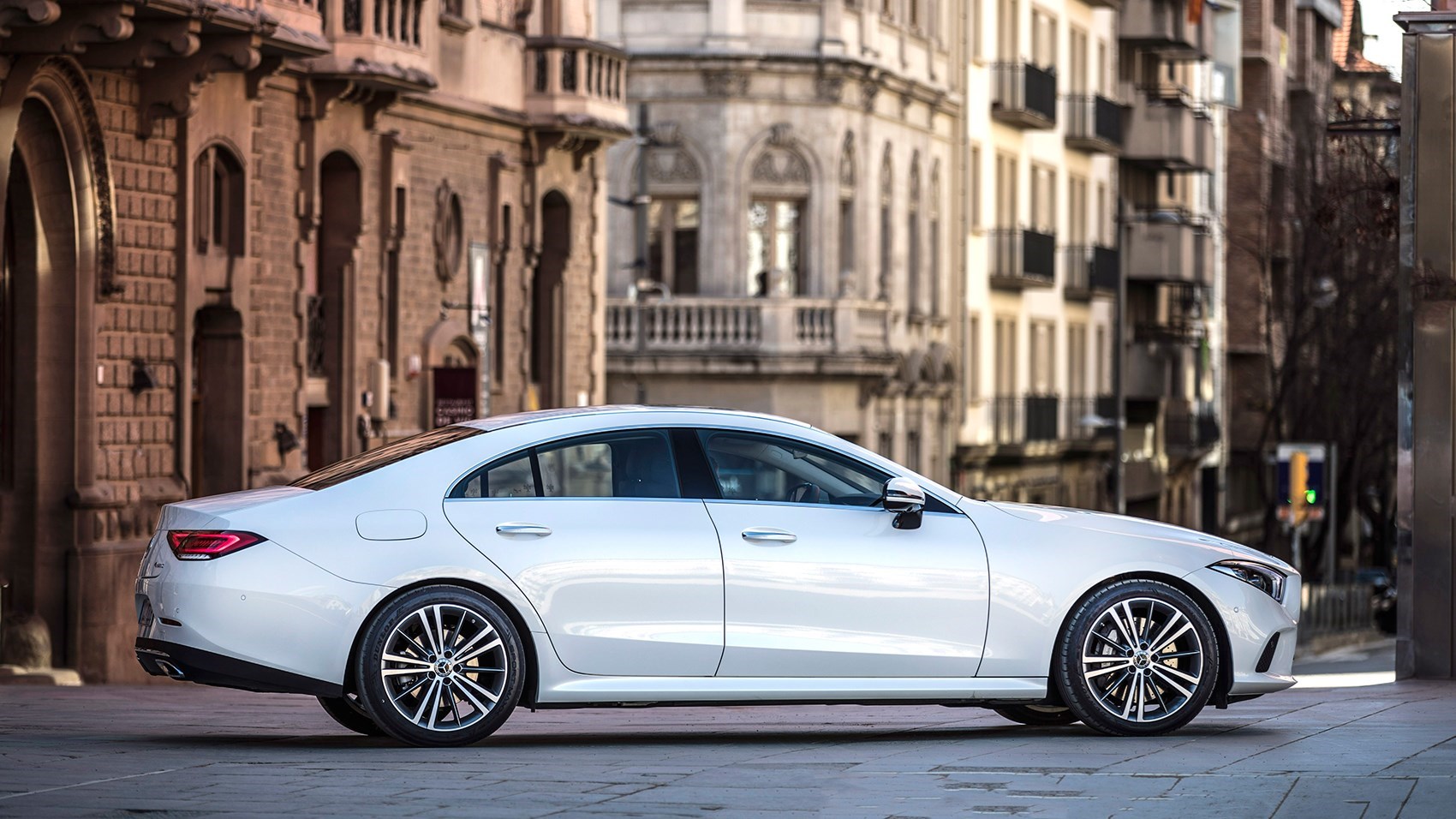
The new car’s design includes some of the familiar hallmarks of previous CLS generations – an arching waistline, sloping roof and a lack of hard edges. It’s as slippery as it looks, with a Cd of 0.26 making it super-slippery from an aero point of view.
Talk me through the new 2018 Mercedes CLS range…
From launch, the core range offers a choice of two diesel engines and two petrols. All have 4Matic-branded all-wheel drive, and use a nine-speed 9G-Tronic automatic gearbox.
Both diesel options involve a new 3.0-litre straight-six, branded as the 350d or 400d depending on performance:
- Mercedes CLS 350d 4Matic: 282bhp, 443lb ft, 5.7sec 0-62mph, 48.7mpg, 156g/km CO2
- Mercedes CLS 400d 4Matic: 335bhp, 516lb ft, 5.0sec 0-62mph, 47.9mpg, 156g/km CO2
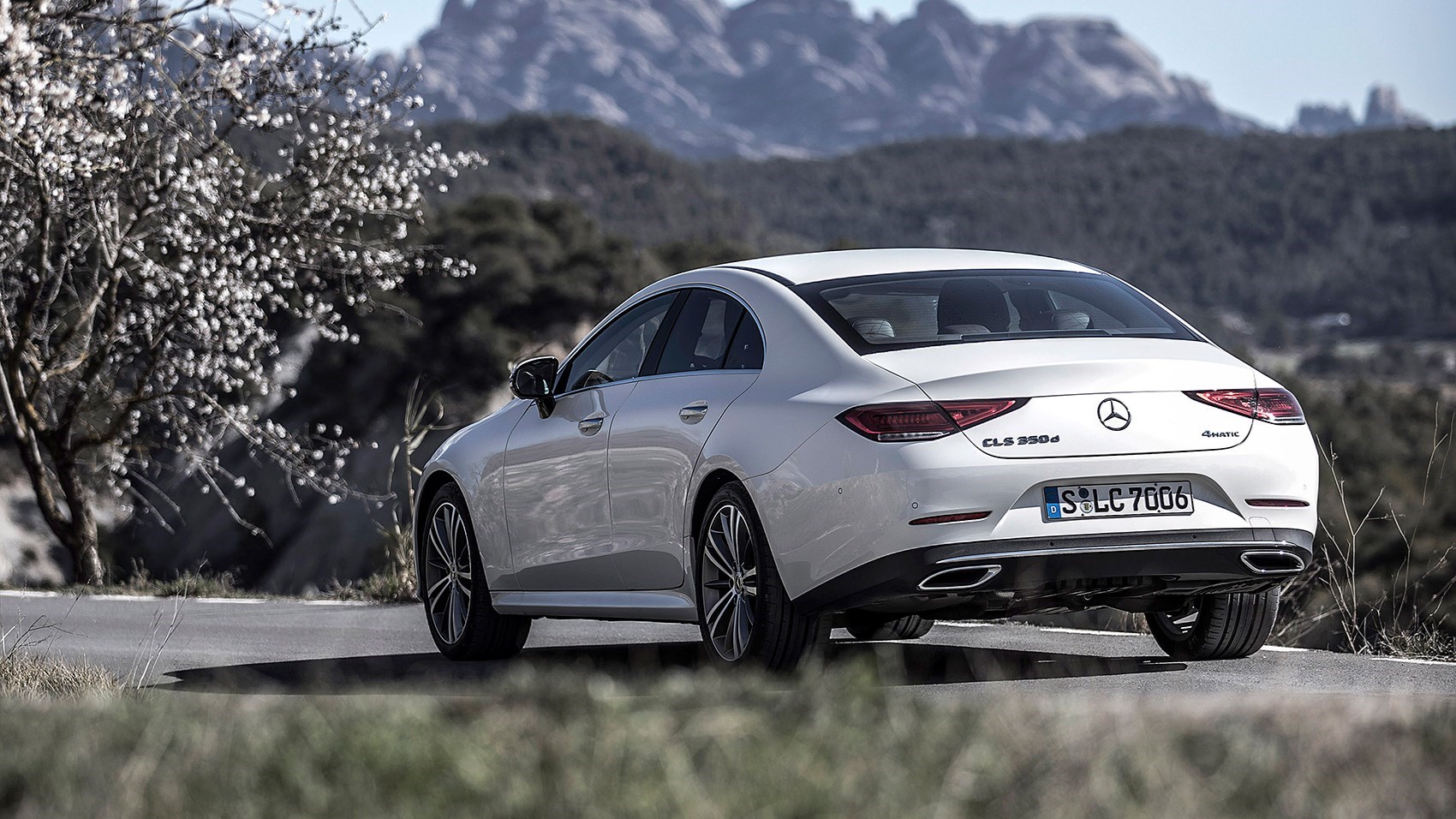
While the petrol engine also marks a return to the straight six layout, ditching the V6 of yore:
- Mercedes CLS 450 4Matic 3.0-litre straight-six turbo with 48V electrical system, integrated starter generator motor (ISG) and lithium-ion battery. 362bhp, 369lb ft (plus 22bhp/184lb ft ‘EQ Boost’ from the ISG), 4.8sec 0-62mph, 36.2mpg, 184g/km CO2
The new 3.0-litre straight-six employs one conventional exhaust-driven turbo, augmented by one auxiliary electric compressor. Combined with a 48v power supply, it also features EQ Boost, Merc’s name for an integrated starter generator (ISG), which combines starter motor and generator in one powerful electric motor, housed between the engine and transmission.
What does EQ Boost do?
It helps provide extra go under hard acceleration (a boost of as much as 22bhp and 184lb ft, according to Daimler), with energy recuperation for the battery, seamless start-stop functionality and extra help for cold starts. It also enables ‘gliding’, where the engine drops out of the equation temporarily to help save fuel.
Arriving later in 2018, a punchy turbo four-pot with approximately 200bhp and 162lb ft will also use the 48v electrical set-up. It uses a belt-driven starter-generator motor, helping with energy recuperation for the battery under braking and replacing the conventional starter motor. It too can provide a power boost under acceleration, helping to negate the effects of turbo lag below 2000rpm. The same engine family also features in the latest Mercedes E-class.
The new CLS AMG 53 version
Previous CLS generations have included a rip-snorting V8-powered AMG performance version. There’s an Affalterbach-fettled performance variant this time, too, but it doesn’t use a V8.
Instead the Mercedes-AMG CLS 53 4Matic+ (catchy, huh?) uses the same 3.0-litre in-line six/EQ Boost motor assist set-up as the CLS 450, albeit with the power ramped up somewhat to 429bhp and 384lb ft, with an extra 22bhp/184lb ft shot in the arm available from the integrated e-motor when required:
- Mercedes-AMG CLS 53 4Matic+ 429bhp, 384lb ft, 4.5sec 0-62mph, 32.5mpg, 200g/km CO2
Mercedes says there’s no risk of overlap with the upcoming faster-still AMG GT four-door coupe, as there will be a ‘significant’ price jump to that car.
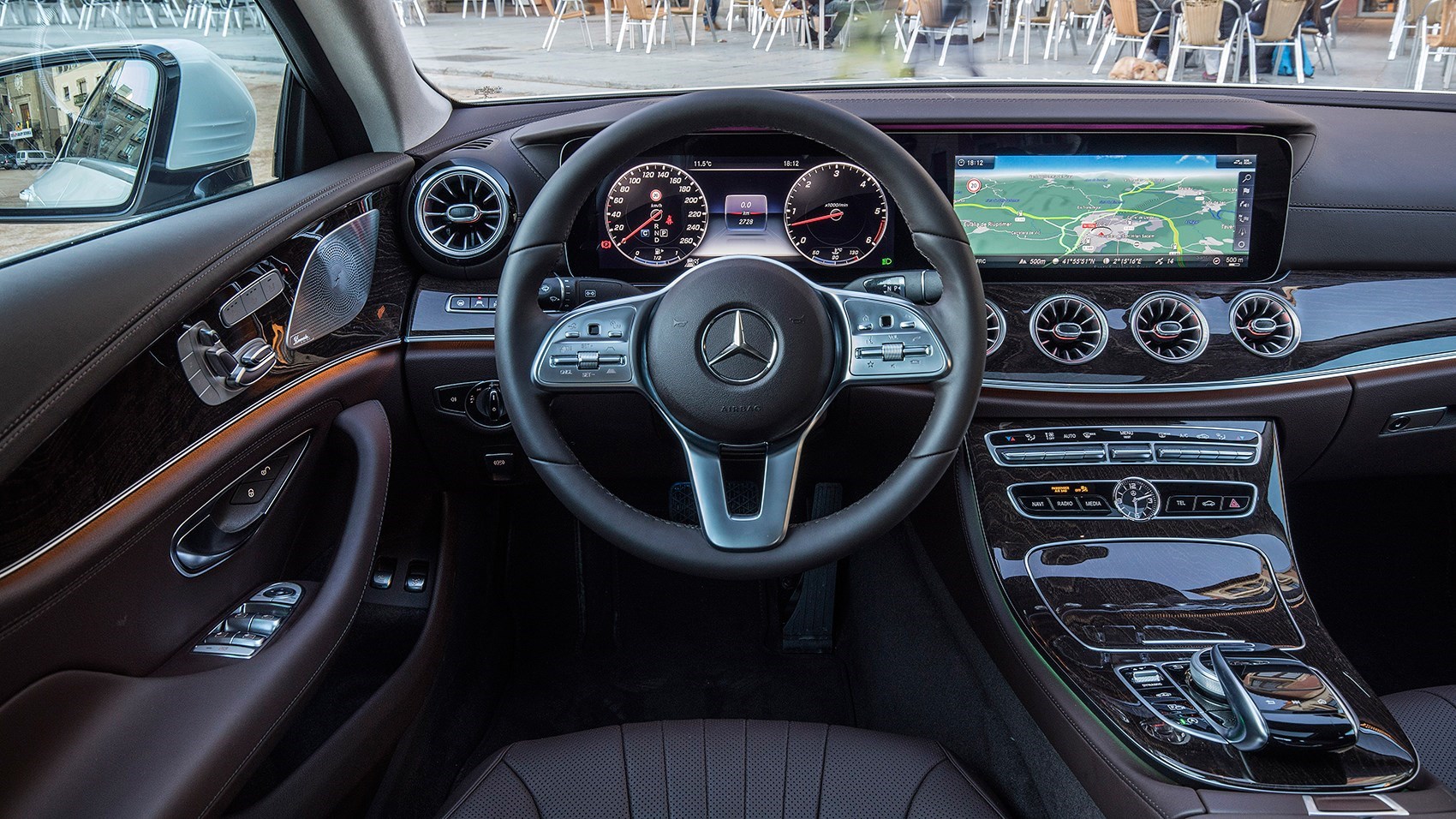
The new 53 powertrain will be rolled out across further AMG models, taking over from the existing 43 models as that particular engine gets retired.
Room for a full-fat AMG CLS 63 above the 53? ‘There is always room,’ CLS marketing product manager Lutz Regelmann told us. Although that doesn’t necessarily mean there will be – nothing has been officially confirmed.
New Mercedes CLS prices
From launch, the CLS 350d kicks off the range at £57,510, with the CLS 450 costing fractionally more. The CLS 400d starts just beyond £60k.
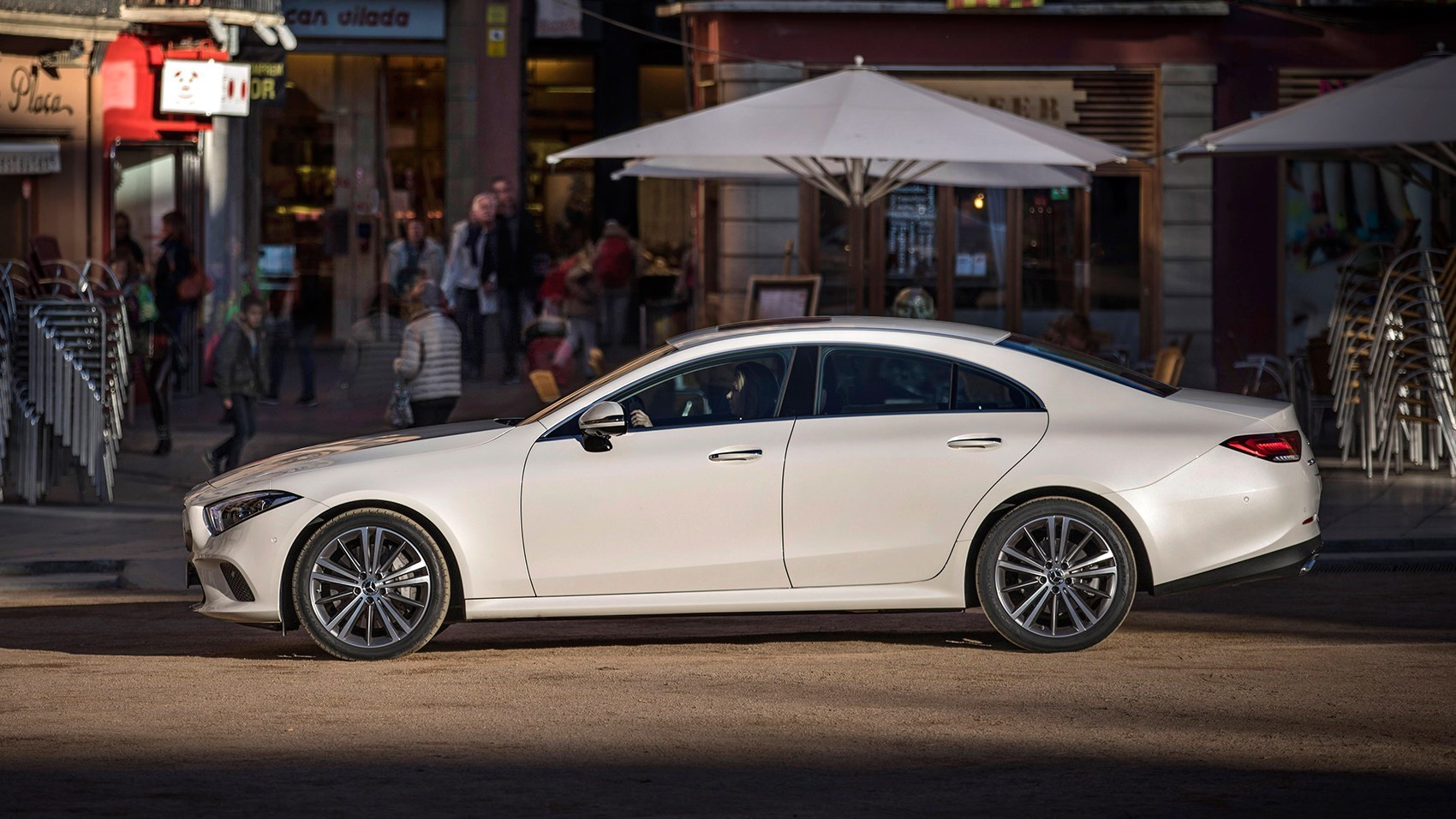
Prices are TBC for the AMG 53 at the time of writing.
Okay, got it. What are they like to drive?
First things first – the Spanish-based launch for the CLS was disrupted by heavy snow, so all of the cars we tested were fitted with winter tyres and smaller-than-usual 18-inch wheels (19s are standard).
When we’ve tested the cars in the UK in less extreme weather, we’ll update this review with more conclusive observations.
Mercedes-AMG CLS 53 4Matic+
Let’s start with the quick AMG variant first. And quick feels like the operative word rather than fast; this is certainly not a slow car, but, subjectively at least, it doesn’t provide the sledgehammer acceleration you might expect from a high-end AMG, even with the EQ Boost assistance in play. The 1980kg kerbweight might have something to do with that.
It sounds reasonably rorty, with a muted sotto voce rasp to the engine’s note and a slightly synthetic-sounding exhaust belch on upshifts under heavier acceleration. The nine-speed auto transmission tends to take a while hunting for the right gear – it does have a lot to choose from, after all.
Traction was stupendous, even on icy roads, helped by the 4Matic+ system’s automatic continuous torque shuffling between the axles to find grip (and the winter tyres too, no doubt).
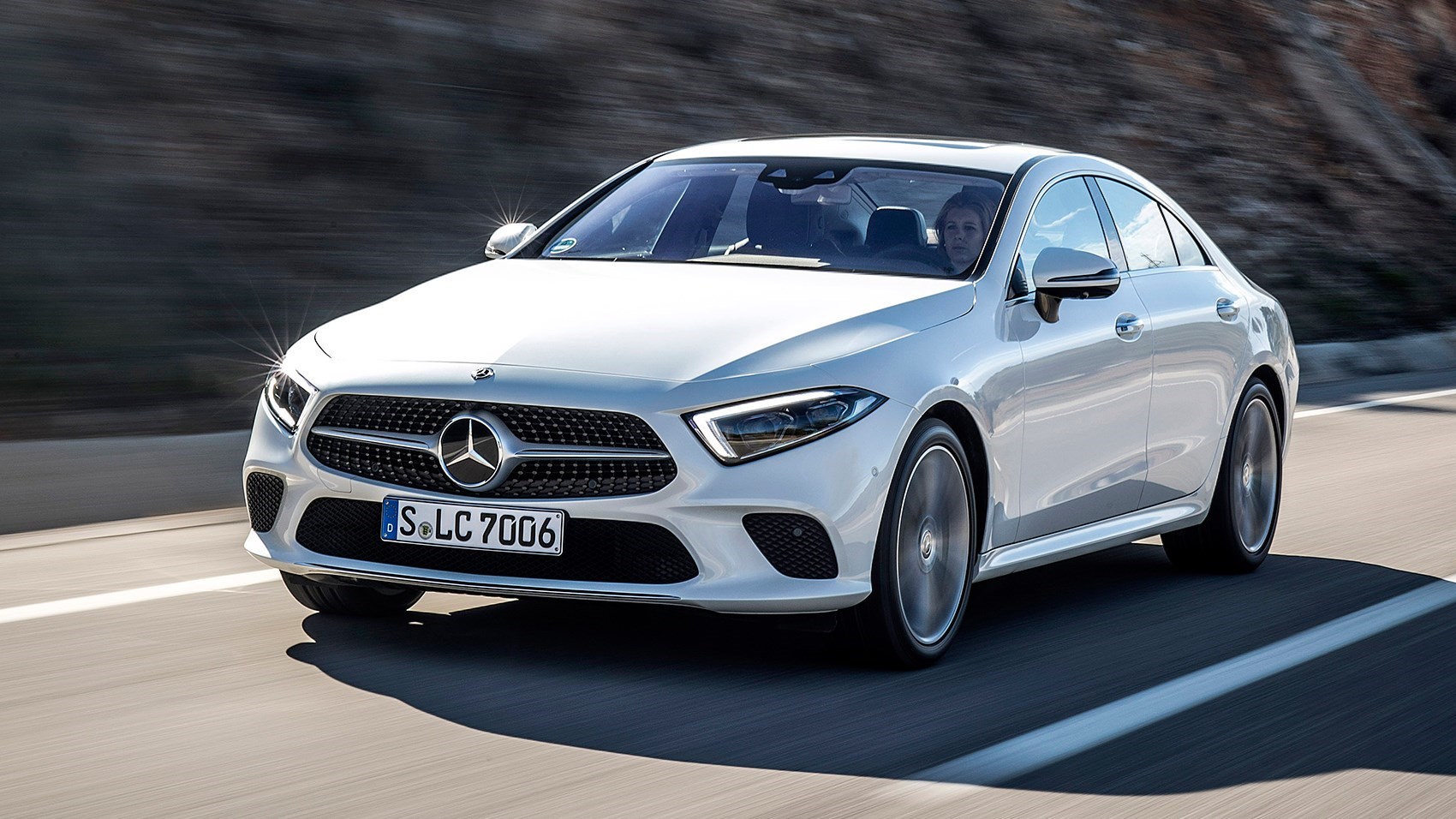
The 53 rides on air suspension with AMG Ride Control adaptive dampers to go with its air springs. Although more sportingly tuned than the rest of the range, it’s still set up with comfort a priority. There’s a fair degree of body roll, felt more noticeably if you’re sat in the back. The steering still feels sharp, responsive and pointy in the way that many of the best AMGs do, however.
The more I drove the AMG 53, the more I liked it, but I must admit it left me feeling a little cold subjectively; it lacks a little theatre compared to other AMG models. Perhaps more time in the car in the UK in different conditions will change that viewpoint.
Mercedes CLS 400d 4Matic review
With 516lb ft of torque, the top diesel CLS doesn’t feel much slower than the AMG, and it’s more refined, too. It’s incredibly quiet at a cruise, aided by the CLS’s laminated (yet frameless) window glass.
The regular CLS is a particularly comfortable way to travel, absorbing large bumps into its soft suspension. It’s wafty without being wallowy. It’s worth noting this car was on smaller-than-standard wheels, of course.
New four-cylinder engine
Although the electric assistance in the new four-pot engine is said to effectively fill the torque hole below the turbo’s optimum operating window, we still felt a fair amount of lag in its response while driving on an admittedly hilly route.
When into its powerband, it can punt the heavy CLS along at a handy lick of speed, but its coarse note at higher revs feels at odds with the car’s upmarket standpoint. Even more so than the musclier 450, its nine-speed auto ’box spent plenty of time prevaricating over which gear it wanted to use and when. We found ourselves reaching for the shift paddles to prevent it kicking down the gears on the exit of tight corners quite so enthusiastically.
What’s the CLS interior like?
A typically swoopy modern-era Merc cabin, that blends some new details with existing E-class architecture. The illuminated air vents shaped like jet turbines are a high-point, with their backlighting changing from red to purple to blue, depending on your temperature setting.
Further ambient lighting abounds throughout the interior, with more than 60 colours available to scroll through if you’ve got time on your hands.
Two widescreen digital displays stand upright within the dashboard’s curves, with customisable instruments and an enormous – yet tricky to use (for us, at least) – sat-nav interface.
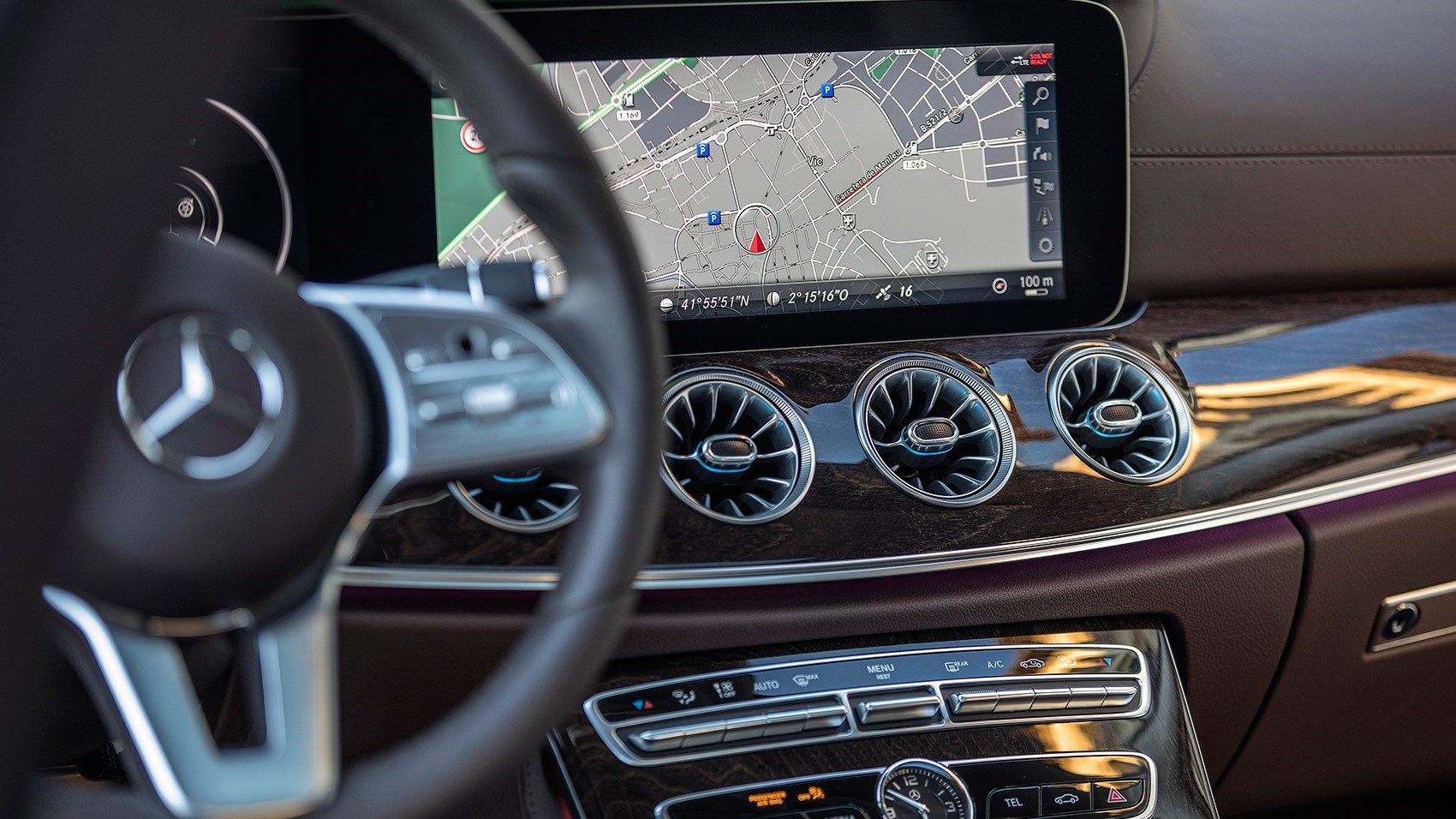
Notably slim lightweight seats up front help interior space in the back, and there’s plenty of that. Headroom is fine, despite the plunging roofline, although whatever your passengers’ heights, they’ll need to stoop to duck their heads under the roof as they climb in.
There’s a giant boot, too.
Robo-driving tech adapted from the S-class and E-class includes Active Distance Control and Active Steering Assist, able to adjust the car’s speed and trajectory automatically, not just in accordance with traffic ahead but also for changing speed limits, and the road itself, using map data to slow the car down in advance of bends, junctions and roundabouts. We struggled to trust the occasionally abrupt changes in speed, and felt more comfortable taking care of doing the accelerating and braking ourselves.
Verdict
The CLS is an epically comfortable, appropriately wafty four-door coupe that’s loaded with interesting tech, a visually arresting interior and luxurious equipment levels. It handles well for such a big, heavy car too – although we need to drive it more extensively in better weather and on standard tyres to assess it fully.
Subjectively, it’s missing a little of the theatre of previous CLS generations, however, both in terms of visual presence (from an exterior point of view, at least) and overall sense of occasion – which the original CLS had in spades. But we’ll be spending more time with it soon – check back for an updated review once we’ve had chance to get to know the new CLS a little better.
Specs quoted are for Mercedes CLS 400d variant
More Mercedes-Benz reviews by CAR magazine